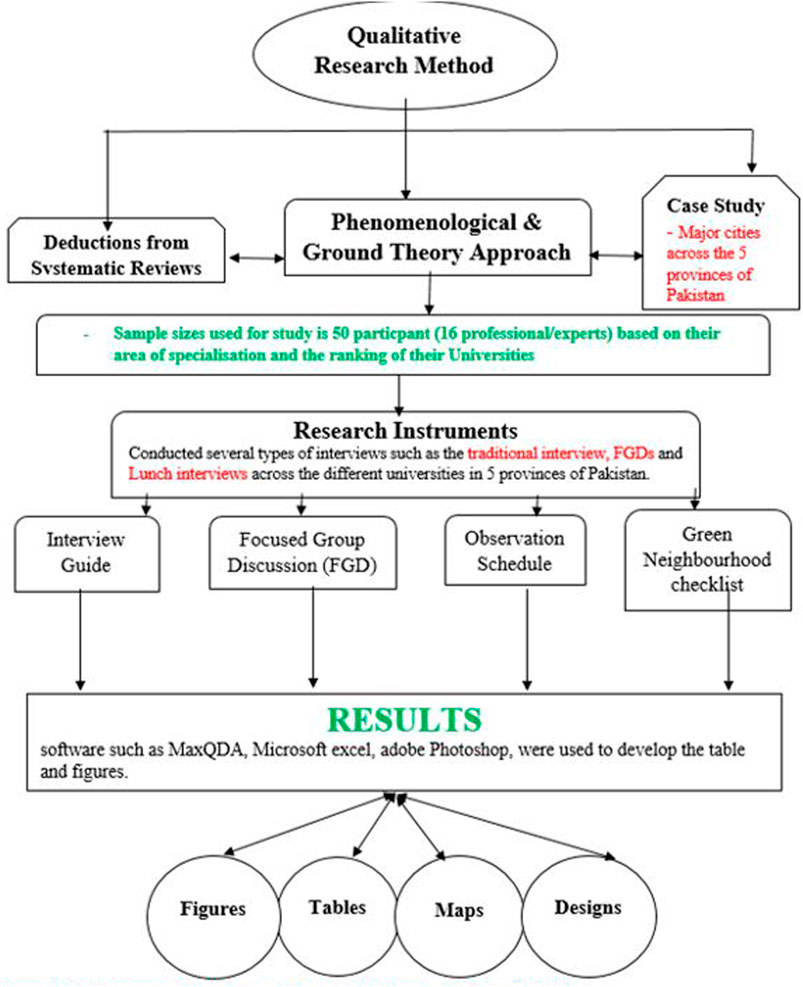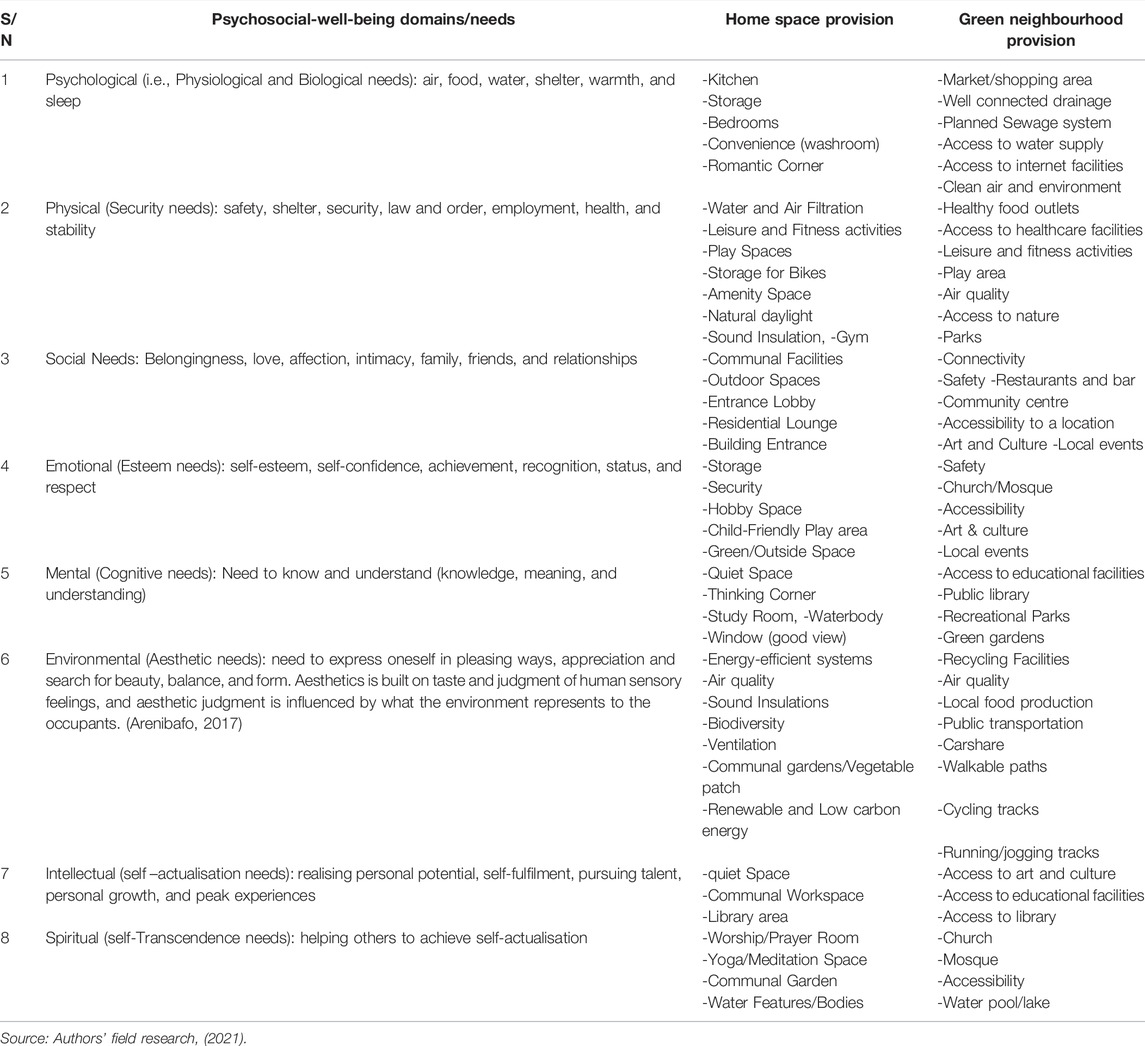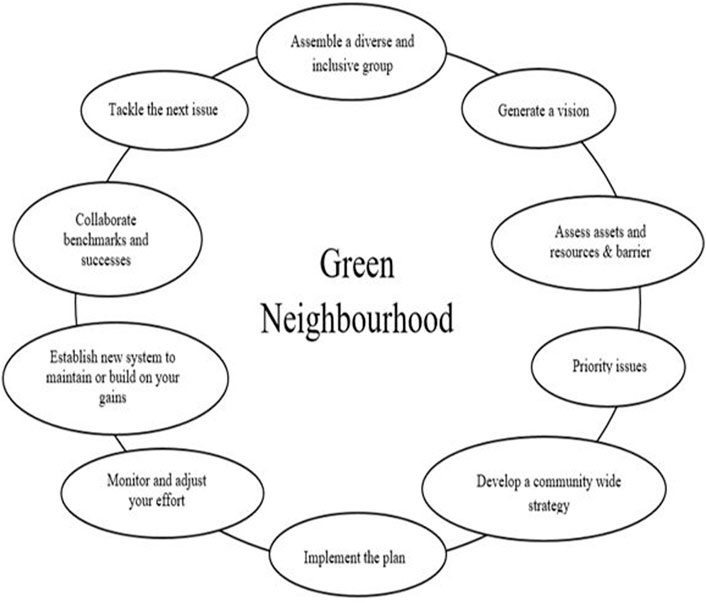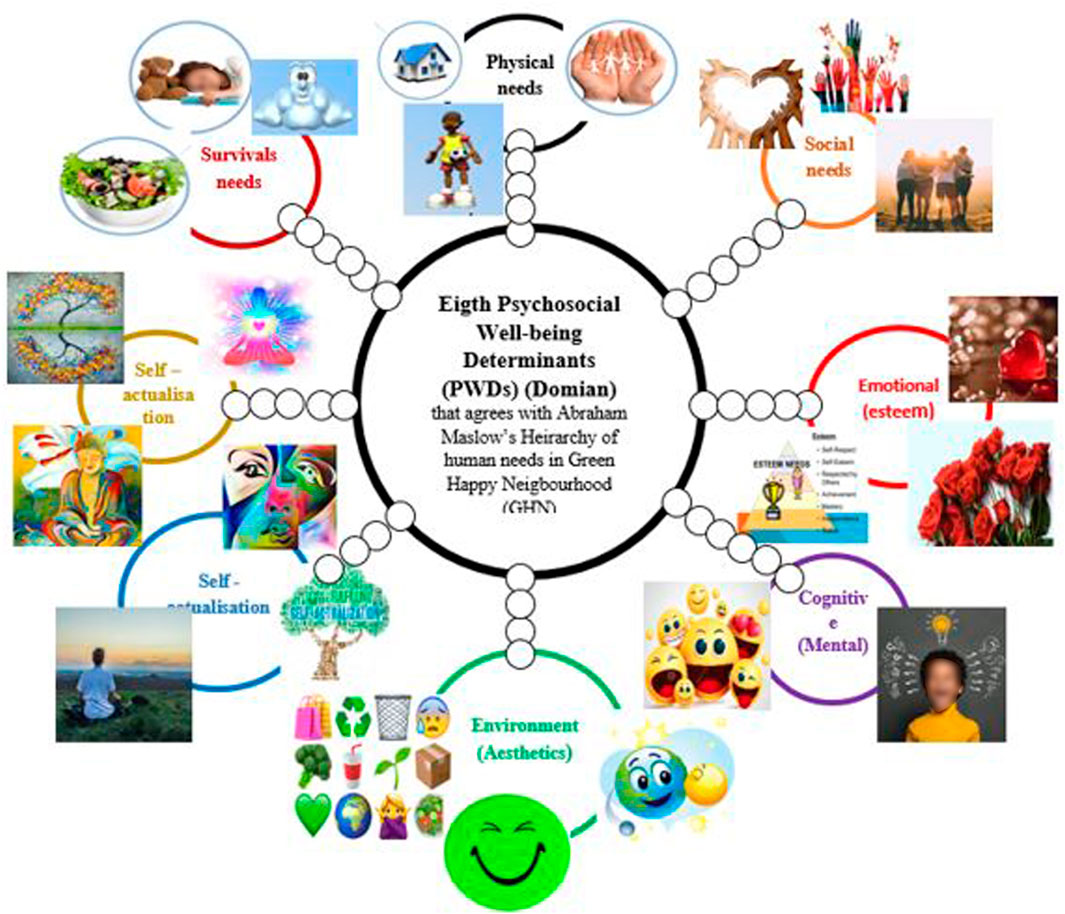- 1Department of Architecture, College of science and technology, Covenant University, Ota, Nigeria
- 2COMSATS University, Islamabad Campus, Islamabad, Pakistan
Psychosocial well-being and happiness are better in green neighbourhoods due to access to nature and green spaces. Hence, this study focusses on investigating how psychosocial well-being determinants (PWDs) affect occupants’ happiness in a green residential community. This article identifies the psychosocial-well-being domain, ascertains PWDs in the green neighbourhood, and analyses the effects of these PWDs on occupants’-happiness. The research method includes a qualitative and systematic subjective approach. Data were collected using triangulation—deductive extractions from literature to familiarize authors with the phenomenon under investigation, interview guides and focused group discussion on expert opinions, and observation guide to elicit information on the identified PWDs in a green community. The researchers had interactions with fifty (50) professionals, architects, builders, material engineers, service engineers, estate surveyors, urban and regional planners, property developers, medical doctors, psychologists, environmentalists, biologists, chemists, art historians, environmental health practitioners, and occupants. From the interviews, discussion, and deduction, psychosocial well-being determinants in a green neighbourhood include personal happiness and demography, lifestyle, community structure, local economy, activities, the built environment, natural environment, and global ecosystem. The data result suggested that other environmental factors influenced PWDs. Consequently, PWDs in the community affect occupants’ well-being and happiness in a green home/neighbourhood or community.
1 Introduction
The neighbourhood can, directly and indirectly, impact occupants’-well-being. Neighbourhood well-being examines the interaction between the community and occupants’ comfort (Crane et al., 2016). According to EL Helou. (2019), Community life depends on the occupants’ activity as the sustenance of the built environment. The community might enhance the healing of persistent stress and inclusive psychosocial well-being/health related to human inactivity. However, one of these healing community features is the presence of green spaces and green mobility that naturally promotes physical activity. Environmental health refers to well-being features and quality of life determined by psychosocial, chemical, biological, social, and physical factors. The environment consists of all external to its occupants, comprising physical, social, natural, and behavioural parts (Geng et al., 2019). People need a safe, healthy, and supportive neighbourhood to enjoy decent well-being. The occupants’-well-being is a built environment determinant (Badland et al., 2014). Tarek et al., (2021) claimed that many tools have emerged to assess the quality of the built environment, and there are essential factors within the built environment indicators that influence occupant behaviour. According to Dyer (2016), Haines and Ebi (2019), humanity depends on the environment for energy and materials needed to sustain life, such as clean air, safe drinking water, nutritious food, and safe places to live. The environment, both built and natural environment, can impact its occupants’-well-being. It is significant to interpret well-being issues in the built environment context (Gaminiesfahani et al., 2020). According to Kushlev et al., (2020), in healthy people, 2020 research claimed that the determinants of well-being include—social connectedness, education, gender, physical environments, ethnicity, housing, early childhood development, health and social services, built environment, employment and working conditions, culture, and income. Barton and grant (2006) argued that health and psychosocial well-being determinants in neighbourhoods include; inclusive ecosystem, built environment, natural environment, activities, community, local economy, lifestyle, and occupants. The finding showed that all these determinants are measured using micro-economy, politics (policies), global forces, the neighbourhood, and other regions (Allen et al., 2014; World Health Organization, 2014; Allen et al., 2014; Patel et al., 2018). These determinants may be the causes of residents’ ill-health, disease, and unhealthy residential neighbourhood/community (Van Ewijk and Stegemann, 2016; Elgar et al., 2017). Against this background, the study advances several questions: what is the psychosocial-well-being domain obtainable? What are the psychosocial well-being determinants in green built environments? And what are the effects of these determinants on occupants’-happiness?
2 Literature Review
Ivey and Sonn (2020) claimed that psychosocial discusses the link between human psychosomatic experience and social experience. Psychosocial well-being involves; several histories of well-being and is affected by internal and external factors. The “Attribution” theory describes internal or dispositional factors as personal and within one’s control—traits, abilities or feelings. Whilst external or situational factors are outside of one’s control, such as environment or social situations. According to Tomyn et al. (2017), measuring well-being involves the quality of people’s lives and structured public policy. Well-being is having an elevated quality of life, achieving life anticipated outcomes and contributing to society. Steady well-being is when people have the psychological, physical and social resources required to meet their respective challenges. And it is usually multidimensional, capturing mental, physical, economic, social well-being, and liveability facets of life. Diener and Seligman (2004) reasoned that well-being is measured objectively and subjectively. Subjective well-being indicators such as an individual’s interests, needs or preferences provide a better assessment than objective well-being procedures—income, expenditure, educational attainment or lifespan. Durand (2015) believed that within subjective well-being texts, there are—hedonic, which measures well-being based on an individual’s self-rated happiness and satisfaction with life. Also eudaimonic, measuring a people’s sense of purpose and meaning. Both concepts are domain-based measures. Pritchard et al. (2020) divided eudaimonic well-being measurements into six constituents: positive relatedness, autonomy, life purpose, self-acceptance, mastery, and personal growth.
Huppert and So (2013) supposed that objective well-being measures people and communities’ characteristics. Well-being is high/low depending on a people’s educational attainment, employment, housing, income, security, and environmental quality, which are better quality of life indicators embedded in the national statistical system. According to OECD (2011); Scott et al. (2018), there are diverse well-being that engages objective and subjective indicators. Examples include the United Nations Development Programme (UNDP). Human Development Index and later versions of Measures of Australia’s Progress (MAP) from ABS in Australia and the OECD well-being framework. ARC resource pack. (2009) believed that psychosocial provision is a measure of upkeep and support that guides individuals and the social setting. It varies from attention and care offered by caregivers, family members, neighbours, friends, teachers, expert psychological, health workers, and social services. Psychological effects affect different levels of functioning—cognitive, affective, and behavioural. Social effects affect family and community networks, relationships, cultural customs, economic position and life tasks—work or school (Wolff, 2010; Jetten et al., 2012; Taylor et al., 2017; Martin-Moreno and Harris, 2018).
Aydın and Sıramkaya (2014) describe a neighbourhood as a sub-public area where the most tangible and unique practices of neighbourliness, social cooperation and group are possible. They believe that neighbourhood fabric shaped indecisiveness of physical structure and culture in all social orders exhibits a polite and conventional structure shaped with privacy in a routine arrangement. Neighbourliness in this way depends on belonging, respect, tolerance, and ownership. The neighbourhood concept departure began with a change of physical fabric forming the neighbourhood; a sense of belonging among residents became awkward. According to Robertson, Smyth, and McIntosh (2008), the social characteristics of neighbourhoods are multifaceted and subtle occurrences that exist in an active state and display elements of both historical continuity and change. They noticed that neighbourhood identity was customary in the early part of its history. Social class and social status strengthen neighbourhood characteristics and are resilient to change. New neighbourhood design goals are precarious, given the permanence and resilience of neighbourhood characteristics. It has significant effects on the prospect of “mixed communities,” planning and designing new housing developments. Moakhar et al. (2015) observed that residential neighbourhoods in metropolises have been urban life cells and performed a pivotal role in the lives of their residents. These neighbourhoods had distinctive characters and identities. Today’s development, the growing need for residential homes, residential areas with commercial integration approach and marginal use of building sites in communities have improved construction speed. This approach ignores human—identity, social culture, unstable social spaces, and lack of character. Also results in occupants’ participation reduction, the feeling of loneliness, and a lack of a sense of belonging. Another issue is occupants’ satisfaction with their living environment that architects are always looking to improve the shared relationship between man and the built environment to the desirability of life and residents’ satisfaction with the quality of life (Watson et al., 2010; Koger, and Winter, 2011; Simpson, 2014; Waldheim, 2015; AKTAR, 2017; El Ghandour, 2017; Pigou, 2017; Haslam et al., 2021). Cohen (2013) explains that a community means interacting with persons living in a communal location. It is a group around shared values and is recognized with social interconnection within a shared physical setting in social divisions more than a household. The community have three Dimensions: Geographical, Psychological, and Structural dimension. Durkheim (2018) claimed that the elements of a community are—Territory, We-Feeling, Commonness and Ideology: community members share a common ideology. Garcia and Sanchez (2021) affirmed that the features of a community include, Group of People, Permanency, Naturality, Likeness, Wider End, Particular name, and Legal Status (Eldredge et al., 2016; Fertman, 2016; Exworthy et al., 2017; Forsyth et al., 2017). However, from critical review and research experience, it was agreed that for this kind of study, it is best to engage the Phenomenological and ground theory approach in other to determine the size of interviewees and key informants (experts and professionals) since the research approach is qualitative, exploratory-descriptive, and contextual.
3 Materials and Methods
The study employed a qualitative method using a case study as the research strategy and the phenomenological model to explain the psychosocial well-being phenomenon and grounded theory to provide an explanation or theory behind the study. The researchers engaged a holistic account to develop a complex picture of the issues under study by involving multiple perspectives reporting, identifying the many determinants involved, and generally sketching the larger image that emerges. Data reported were collected as part of a study examining the Occupants’ Happiness and Psychosocial Well-being Determinants Nexus in a Prototype Residential Neighbourhood as shown in Figure 1. The research design preceded thisstudy . Participants in the study were from 16 experts or professions: Built Environment Professionals-BEPs, health and medical professionals-HMPs, clinical psychologists, environmentalists and architectural historians. To join in the study, participants must be 1) at least 24 years old; 2) reported to have lived and still living in a neighbourhood/community; 3) identified as a certified, qualified and practising profession; and 4) reported to having training and experience in well-being and built environment-related issues. Data collection procedures took place between 31 May and 30 January 2020. Data collection instruments engaged multiple methods of the collection- interview guide, focused group discussion schedule, visiting towns, and events to understand the participants meaning on the subject matter and observation guide/checklist used to record the features of a green neighbourhood that enhance occupants’-happiness. Data on psychosocial well-being determinants collected through interviews and literature were in tables, charts and figures. The research focuses on experts’ (professionals) opinions on the BEPs, HMPs, clinical psychologists, environmentalists, and architectural historians to validate the authors’ expectations on psychosocial well-being determinants and occupants’ happiness in the green residential neighbourhood.
3.1 Study Area
The authors conducted in-depth interview guides, Focused Group Discussions (FGD), and research findings in major cities across the five (5) provinces of Pakistan. These include Kalat in Baluchistan province; Gilgit- Baltistan-Northern Areas province; Abbottabad and Peshawar in Khyber-Pakhtunkhwa-KPK North-West Frontier Province; Rawalpindi and Lahore in Punjab province; Karachi in Sindh province and Islamabad Capital Territory as shown in Figures 2, 3. Practising experts based in the university from varied professional backgrounds were targets for the assessments, and the researchers selected a representative sample of 50 respondents in the five (5) provinces of Pakistan since sample sizes for phenomenological and ground theory approaches are often also larger—between 20 and 60 (Vasileiou et al., 2018). The focus of the research was to assess expert opinions from relevant professionals on the health and happiness necessities in a prototype green residential home by engaging the following intents—identify the health features in a green residential home; ascertain the happiness determinants in green residential homes; develop a conceptual framework that encapsulates the 3H-Healthy Happy Home concepts. The analysed data results of this study were arranged and discussed along with these three objects.
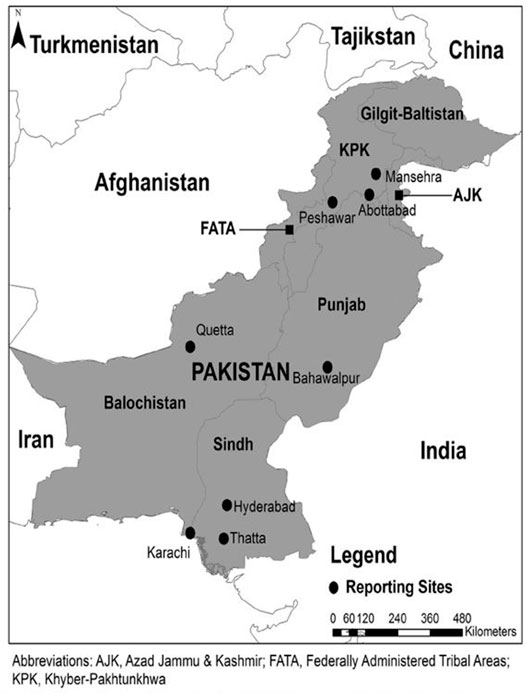
FIGURE 2. Map of Pakistan showing the five major provinces and major cities; source: Kalwar, Dali, Hassan, (2018).
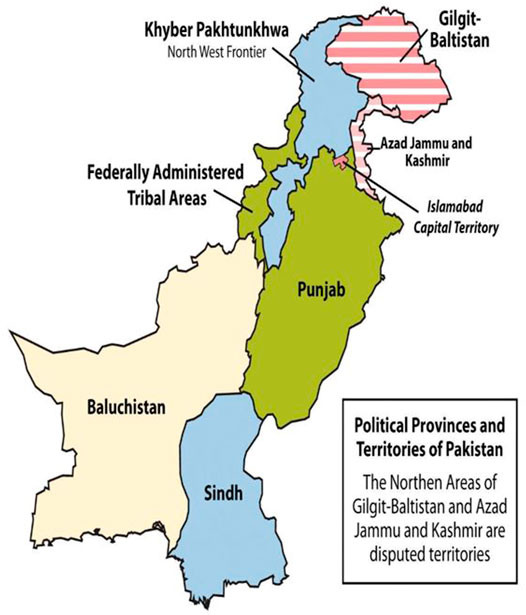
FIGURE 3. Map of Pakistan and Sindh province; Source: Kalwar, Dali, Hassan, (2018).
4 Findings and Results
The method of data analysis was dependent on the study research questions presented. The approach for evaluating the qualitative data rely on research questions, the method selected and the form of analysis applied. However, the research questions raised in the study include the following:
i. What is the psychosocial-well-being domain obtainable?
ii. What are the psychosocial well-being determinants in green built environments?
iii. What are the effects of these determinants on occupants’ happiness?
The authors presented results in the chronological order of the questions arranged. These questions in statement format are the objectives of the study.
4.1 Results of Identifying the Psychosocial Well-Being Domain
From the research finding so far, it was discovered that an understanding of Sigmund Freud’s Pleasure Principle and Abraham Maslow’s Hierarchy of Needs Theory of motivation, would foster the develop a green happy neighbourhood (GHNs) that meets residents’ needs while encouraging increased levels of psychosocial well-being, and physical health.
Dr Ayesha Inam-clinical psychology in the department of humanity, COMSATs University, Islamabad. When asked what the possible psychosocial well-being domains are? She said, “We may choose quality of life (QOL) domains to represent the psychosocial well-being domain. However, she further said that there is eight domain in psychology (Biological, physical, social, developmental, environmental, emotional, mental, and spiritual). Since psychosocial well-being is an aspect of psychology, the eight domains in psychology identified apply equally to psychosocial well-being.”
Table 1 presents the psychosocial well-being domain and neighbourhood connectivity. The eight psychosocial well-being domains are consistent with the eight levels of Maslow’s hierarchy of needs. The residential-happiness provision was according to each need/domain and possible green neighbourhood requirements/provisions. These provisions were, proposed, validated and recommended below.
4.2 Result on Ascertaining Psychosocial Well-Being Determinants in Green Neighbourhoods
Well-being, or its lack, in a neighbourhood is the several factors often interwove across social, economic, political, physical, and environmental spheres. In the word of Dr Nabgha Aman, a Bio-Environmentalist in COMSATs University Islamabad, Pakistan, “Neighbourhood issues affect the overall well-being of the neighbourhood as a whole, and therefore should be approached within a neighbourhood context.” The green community provides an ethical framework for a comprehensive, hands-on process. To raise the quality of life for all and create a healthy neighbourhood (Eastwood and Miller, 2008; Caplan, 2013; Gattino et al., 2013; Bowling, 2014). Two basic premises underlying the green neighbourhood concept—a comprehensive view of health and neighbourhood issues, covering a broad range of factors such as—[(Building healthy public policy and creating supportive environments) natural, built, economic, work, leisure, social and political setting, Reinforcing community action, Increasing personal skills, and Reorienting services], that is contributing and committed to the active promotion of a green neighbourhood. By addressing the psychosocial-well-being determinants, and neighbourhood issues, creating the right policy and environments, inspiring social action, providing personal skills, and reorienting services to a more wide-ranging approach. The neighbourhood can nurture occupant happiness. There are 10n components of a green neighbourhood, as shown in Figure 4.
The conceptual diagram shown in Figure 5 ascertains the well-being determinants by signposting occupants to green neighbourhood services. The resident’s connections with green activity and access to information, advice and support required to access the green community assets will promote better well-being. Physical environment and socioeconomic factors account for 50% of the determinants of well-being (Villanueva et al., 2015). Also, social isolation is one of the main well-being risks.
To further ascertain psychosocial well-being determinants in a green neighbourhood, Barton and Grants, 2006) identified the determinants in seven concentric segments that begin with—the global ecosystem—confronted with changing climate across the globe due to scientific activities on man and biodiversity is occurring because the ecosystem and biosphere are being disturbed. These occurrences affect the neighbourhood’s health, residents’ well-being and happiness. In the natural environment, rules and regulations reestablish and reserve clean air and water; create and preserve public space, natural beauty, and wasteland; restrict the usage and removal of contaminated substances; conserve raw materials, including living organisms. All of these actions enhance well-being and ease stress. Deliver an aesthetic practice and touch community life for the better. The built environment—looks at people-friendly spaces and buildings design (human scale, with pedestrian pathways, meeting places, sights, and allure), handicap access, conservation of antique and cultural heritage, hygiene, safety (traffic patterns, lighting, long views, building and bridge design, and bans on the use of toxic materials); decent mass transit; traffic-free paths to inspire walking, jogging, and bicycling. Activities—considers the work setting as a source of motivation, instead of stress that nurtures originality and passion and improves, instead of detracting from, both creation and employees’ quality of life. The local economy–describes a healthy economic setting as a situation where there is work for each person capable of working, creating wealth and having a ready market. Community—in this context, is a green neighbourhood that inspires social networks, offers meeting places where persons from the community may mingle, rears families and children, propose education and other services, and endeavours to nurture non-violent and healthy behaviour. Invites acquaintance and communication among the several groups that constitute the neighbourhood and respects all groups and persons. Lifestyle in a green neighbourhood allows all citizens to have; a sense of power, ownership and control. The neighbourhood should provide recreational and cultural opportunities for relaxation (parks and beaches, museums, cultural and sports events, and libraries). People focus—on age, sex, and hereditary factors as a vital considerations in determining residents’ well-being and Happiness. In an interview with Prof. Anees UL-Hag, a clinical psychologist in the psychology department, National University of Modern Language (NUML) Faisalabad, Pakistan, “...........Psychosocial well-being prototypical is an important determinant to psychosocial-well-being in a green residential neighbourhood.” He added “It is core factors like culture, social ecology and human capacity that determine the engagement of neighbourhood peripheral resources such as—environmental, physical, and economic resources. Therefore to enhance psychosocial well-being in a green neighbourhood, the key drivers are the core factors.”
4.2.1 Green Neighbourhood Checklist
The green neighbourhoods initiative is a noble effort, therefore the authors have prepared a checklist of green features to expect when designing a green neighbourhood to call home.
The eight green elements that make a green neighbourhood a home for psychosocial well-being determinants that enhances occupants’ happiness as outlined in Table 2 are—Preserved Environment, Conscious Landscaping, Gardens and Community Agriculture, Building Orientation and Design, Green Facilities, Human-Scale Infrastructure, Integrated Communities, and Inclusiveness for all. These eight elements are consistent with the eight human needs and psychosocial well-being determinants.
Table 3 analyzes the inclusion of psychosocial-well-being determinants in green neighbourhoods to produce happiness. The table summarises the whole process engaged in this study and the background theories of human needs and pleasure principle, the proposed strategies for a green neighbourhood according to the research and the key drivers of happiness incorporated.
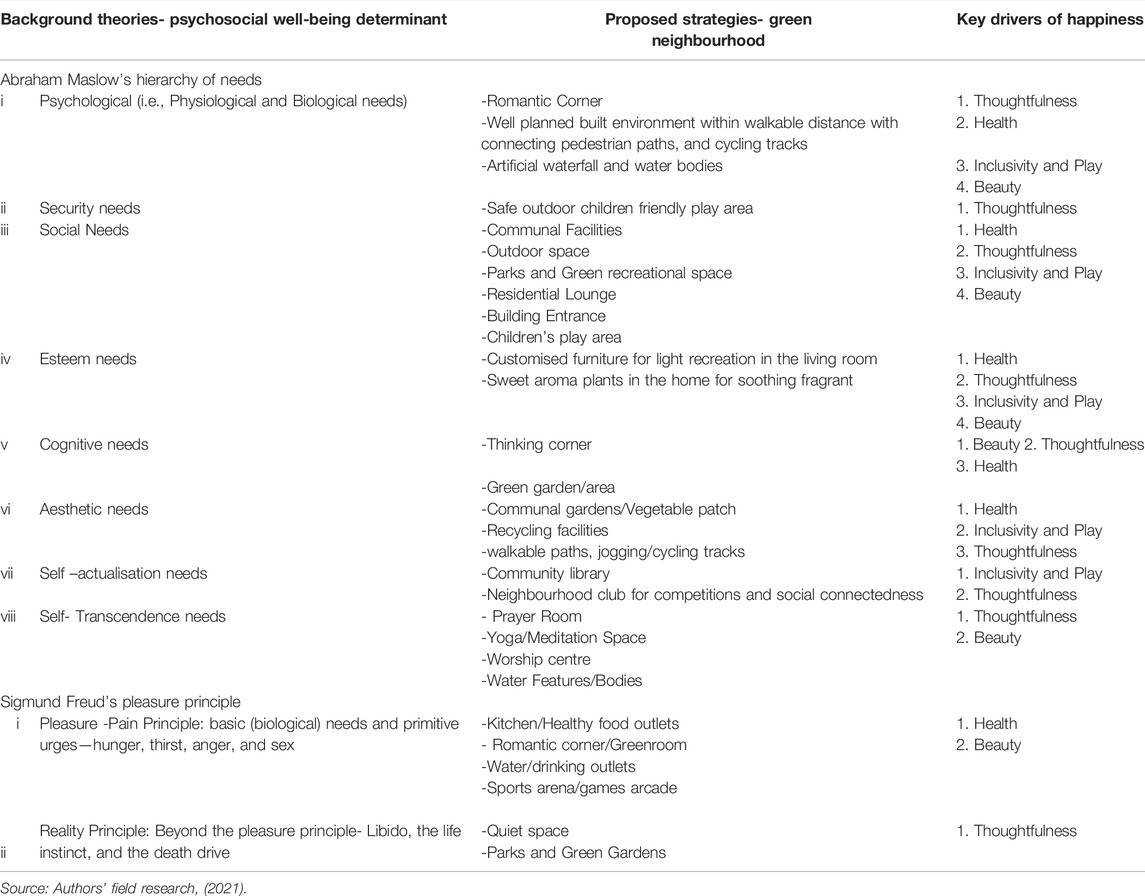
TABLE 3. The input of psychosocial well-being determinants in a green neighbourhood to produce happiness.
4.3 Result on Analysing the Effects of Determinants on Occupants’ Happiness
4.3.1 Recommended Prototypes of Green Happy Neighbourhood Design
The data results indicate that there is a need to design and recommend a Green Happy Neighbourhood (GHN) layout typology that would incorporate the psychosocial well-being determinants (PWDs) to enhance occupants’ happiness. This is true because all of the literature reviews, theories and concepts employed, consistently expressed a strong connection between health, psychosocial well-being and happiness.
4.3.2 Recommended Green Neighbourhood Planning Layout Analysis
A site is the most significant choice when planning a green neighbourhood. From a scheme angle, a site restricts the placement of the home and regulates its location. From an ecofriendly angle, the neighbourhood planning and layout define if a property holder needs a car to travel to work, grocery store, and school. From a neighbourhood perception, a site vicissitudes the feel of a neighbourhood. Careful site resolutions are critical to designing and planning a Green Happy neighbourhood (GHN). In an interview with one of the experts Dr Lionel Mbah-Medical Doctor, a medical doctor and a PhD student of public health at COMSATs University, Islamabad. He said, and I quote, “The planning/designing of the layout has the potential to limit healthy, happy neighbourhood. Communal growth and expansion can be divisive with issues of traffic, schools, and open space.” Green safety is a handful of the keen development fears that home developers and neighbourhood planners are handling. No matter the density of development, planning determines the main aspects of a Green happy neighbourhood. According to Arc. Afzal Ebrahim of the department of architecture, COMSATs University, Islamabad, Pakistan, “a typical community can be designed with specific widths to fit the exact size of the plot with the required setbacks.”
The Green happy neighbourhood design/planning shown in Figure 6 is a planning concept that uses the Traditional Neighborhood Developments (TNDs) approach referred to as “neo-traditional communities.” Some shared features are the following:
• an organized grid of streets to provide car users alternative routes and circumvent concentrating traffic on a busy road;
• an urban centre with a trifling grocery store or convenience store and other requisites (including mass transit links);
• ceremonial squares and greens are at the community centre;
• a mix-use building and housing types comprising detached house-types, row housing and flats and, in the neighbourhood centre, apartments above the stores; higher density; and
• The pedestrian-adapted scheme is a narrow path width sidewalks, street trees, and households are close to the street and lanes. Reposition the driveways from the streetscape.
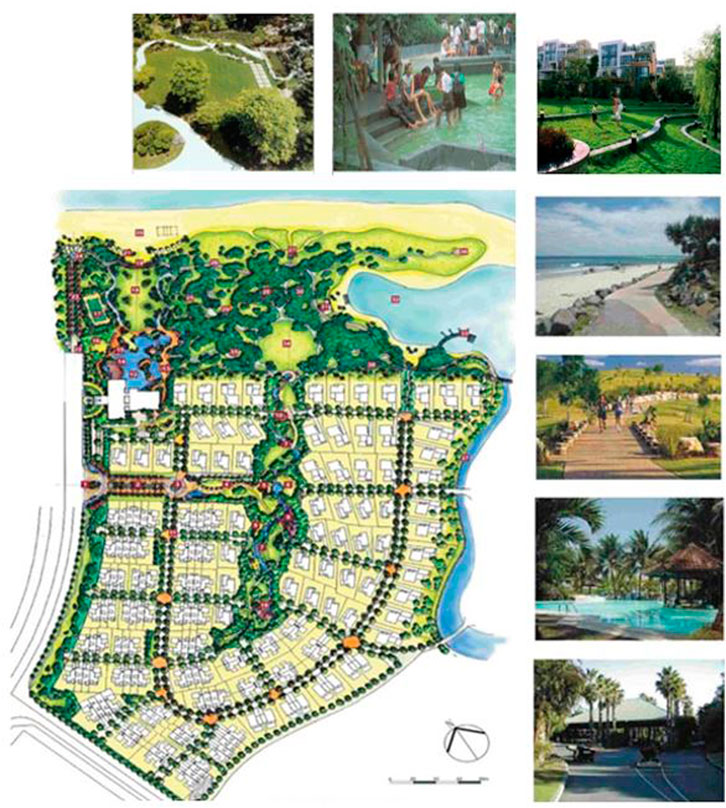
FIGURE 6. Recommended Green Happy Neighbourhood planned layout; Source: Authors’ field research, (2022).
However, analysing a Green Happy Neighbourhood (GHN) includes –
1. Designing a site for a healthy happy home (3H) concept—each site is deliberate for a particular type of home with a robust connection to the neighbourhood and street elevation shown in Figure 6.
2. Design Open Space/parks/recreational area—residents should have communal land/open space—a walk away from homes, allowing persons to care for and relate closely to their neighbours.
3. Design for traffic analysis—providing Pavements, walking tracks, biking tracks, jogging tracks, and vehicular routes.
4. Design an active neighbourhood—people ought to walk or jog or cycle securely to any place in the area by the most direct and straight route possible. These routes should be engaging, stimulating and fun and suggest a variety of sensory involvements with diverse textures, colours, smells, and sounds. It should inspire persons to stroll more and depend less on their vehicle for little journeys.
5. Designed for high and low density—Lower density expansions need careful scheme decisions to take full advantage of the green potential on more sites.
6. Designed for solar access—Provide solar access to as many homes as possible during the planning process.
7. Designed for stormwater management—create water bodies, proper drainage and channels, and more green area to absorb the flow.
8. Designed for smart growth and community connectivity—(Principles of smart growth include: Increased density, Street orientation, Protection and enhancement of natural systems, Consider clustering homes, and other buildings access to public transportation) make the ageing and vulnerable feel benign so that they can stay out for an extended time, talking with their neighbours.
9. Designed creative landscaping can reduce a home’s heating and cooling load costs to 25% through appropriate placement and species selection.
10. Design for a sense of community and belongingness where people of all ages can interact, provide spaces by the street where persons can linger: small facade gardens.
11. Design for a sense of security and safety so that people feel comfortable, safe and welcoming.
12. Design for a sense of beauty—Neighbourhoods should be planned with a consciousness of the seasons, with adaptive landscapes and natural elements. Presenting climbing plant walls and colourful trees are modest ways to attain settings that change with the seasons.
13. Developing a waste management plan requires considerations that include reduction, reuse, recycling and composting, incineration, and the landfill.
5 Conclusion
The study investigated psychosocial well-being, its determinants and the impact on occupants’ happiness in a green neighbourhood. Psychosocial well-being is also mental health and well-being. The study has identified these psychosocial well-being phenomena with eight main domains. Promoting psychosocial well-being among occupants’ in a particular neighbourhood would require the researcher to recognise the determinants or factors that affect such well-being in the area and community. Therefore, recognising these determinants offer a platform for measuring the influence on the occupants’-happiness in a community. Hence supporting psychosocial well-being and its impact on the happiness of green-neighbourhoods’ occupants’ would enhance the vision of a better world. The findings are in line with the new agenda by United Nations. Specifically, SDG 3 concentrates on guaranteeing healthy lifestyles and encouraging wellness for all people of all ages. For the first time, world leaders are promoting psychosocial health, psychosocial well-being and the inhibition, and handling of substance abuse as health primacies in the global development program. The study further revealed the psychosocial well-being inclusion and substance abuse in the Sustainable Development Agenda. Implemented at the UN Plenum in September 2015 has an affirmative impact on neighbourhoods, societies and countries where zillions of occupants may enjoy the needed well-being and happiness. According to WHO Director-General Dr Margaret Chan, “including non-communicable diseases under the health goal is a historical turning point.”
Therefore, the overall findings showed that health and psychosocial well-being features in green happy neighbourhood design can enhance happiness based on certain theories and concepts. It further revealed from the experts interviewed that the key determinants of health and psychosocial well-being in the built environments are enhancers of happiness. The study concluded that using Pakistan as a case study based on similarities of countries in the global south implied that research results might be applicable in all the residential neighbourhoods across the global south.
Data Availability Statement
The original contributions presented in the study are included in the article/Supplementary Material; further inquiries can be directed to the corresponding author.
Author Contributions
WH validated the results and was part of the preparation and writing of the initial draft and final draft. EE involved in the conceptualization of the ideas, research aim, and objective; developing or design of methodology; project administration; research supervision; final writing; and collation of all sections of the manuscript together.
Conflict of Interest
The authors declare that the research was conducted in the absence of any commercial or financial relationships that could be construed as a potential conflict of interest.
Publisher’s Note
All claims expressed in this article are solely those of the authors and do not necessarily represent those of their affiliated organizations, or those of the publisher, the editors, and the reviewers. Any product that may be evaluated in this article, or claim that may be made by its manufacturer, is not guaranteed or endorsed by the publisher.
Supplementary Material
The Supplementary Material for this article can be found online at: https://www.frontiersin.org/articles/10.3389/fbuil.2022.816390/full#supplementary-material
References
Aktar, S. (2017). Urban Public Space: A Case from Developing Country. Karlskrona, Sweden: Blekinge Institute of Technology Dissertation Series. Available at: https://www.diva-portal.org/smash/record.jsf?pid=diva2:1106731.
Allen, J., Balfour, R., Bell, R., and Marmot, M. (2014). Social Determinants of Mental Health. Int. Rev. psychiatry 26 (4), 392–407. doi:10.3109/09540261.2014.928270
ARC resource pack (2009). Foundation Module 7 Psychosocial Support, ARC Resource Pack Study Material.Availableat: http://www.dr.ur.ac.rw/handle/123456789/1408.
Arenibafo, F. E. (2017). The Transformation of Aesthetics in Architecture from Traditional to Modern Architecture: A Case Study of the Yoruba (Southwestern) Region of Nigeria. Jcua 1 (1), 35–44. doi:10.25034/1761.1(1)35-44
Aydın, D., and Sıramkaya, S. B. (2014). "Neighborhood" Concept and the Analysis of Differentiating Sociological Structure with the Change of Dwelling Typology. Procedia - Soc. Behav. Sci. 140, 260–269. doi:10.1016/j.sbspro.2014.04.418
Badland, H., Whitzman, C., Lowe, M., Davern, M., Aye, L., Butterworth, I., et al. (2014). Urban Liveability: Emerging Lessons from Australia for Exploring the Potential for Indicators to Measure the Social Determinants of Health. Soc. Sci. Med. 111, 64–73. doi:10.1016/j.socscimed.2014.04.003
Barton, H., and Grant, M. (2006). A Health Map for the Local Human Habitat. J. R. Soc. Promot. Health 126 (6), 252–253. doi:10.1177/1466424006070466
Bowling, A. (2014). Research Methods in Health: Investigating Health and Health Services. UK): McGraw-Hill Education. ISBN 0-335-20644-1 (HB) – ISBN 0-335-20643-3 (Pbk.). 0335206433.
Caplan, G. (2013). An Approach to Community Mental Health of International Behavioural and Social Library Mind & Medicine, 3. London: Routledge.
Cohen, A. P. (2013). The Symbolic Construction of Community. 1st ed., 128. London: Routledge. doi:10.4324/9780203131688
Crane, M., Rissel, C., Greaves, S., Standen, C., and Ming Wen, L. (2016). Neighbourhood Expectations and Engagement with New Cycling Infrastructure in Sydney, Australia: Findings from a Mixed Method Before-And-After Study. J. Transp. Health 3 (1), 48–60. doi:10.1016/j.jth.2015.10.003
Diener, E., and Seligman, M. E. P. (2004). Beyond Money. Psychol. Sci. Public Interest 5, 1–31. doi:10.1111/j.0963-7214.2004.00501001.x
Durand, M. (2015). The OECD Better Life Initiative:How's Life?and the Measurement of Well-Being. Rev. Income Wealth 61 (1), 4–17. doi:10.1111/roiw.12156
Durkheim, E. (2018). “The Division of Labour in Society,” in Inequality (London, New York: Routledge), 55–64.
Eastwood, J., and Miller, E. (2018). The Healthy Homes and Neighbourhoods Integrated Care Initiative. Int. J. Integr. Care 18, 51. doi:10.5334/ijic.s1051
El Ghandour, S. A. Z. (2017). Towards More Pedestrian-Friendly Streets in Cairo. Availableat: http://dar.aucegypt.edu/handle/10526/4981.
El Helou, M. A. (2019). Shaping the City that Decreases Overweight and Obesity through Healthy Built Environment. Jcua 3 (2), 16–27. doi:10.25034/ijcua.2018.4697
Eldredge, L. K. B., Markham, C. M., Ruiter, R. A., Kok, G., and Parcel, G. S. (2016). Planning Health Promotion Programs: An Intervention Mapping Approach. Jossey-Bass Public Health. John Wiley & Sons, 9781119035497. 4, illustrated.
Elgar, F. J., Gariépy, G., Torsheim, T., and Currie, C. (2017). Early-life Income Inequality and Adolescent Health and Well-Being. Soc. Sci. Med. 174, 197–208. doi:10.1016/j.socscimed.2016.10.014
Exworthy, M., Powell, M., and Glasby, J. (2017). The Governance of Integrated Health and Social Care in England since 2010: Great Expectations Not Met once Again? Health Policy 121 (11), 1124–1130. doi:10.1016/j.healthpol.2017.07.009
Fertman, C. I. (2016). Health Promotion Programs: From Theory to Practice, Jossey-Bass Public Health, 2, Illustrated. John Wiley & Sons, 9781119163336.
Forsyth, A., Salomon, E., and Smead, L. (2017). Creating Healthy Neighborhoods: Evidence-Based Planning and Design Strategies. 1st Edition. New York: Routledge. doi:10.4324/9781351179294
Gaminiesfahani, H., Lozanovska, M., and Tucker, R. (2020). A Scoping Review of the Impact on Children of the Built Environment Design Characteristics of Healing Spaces. Herd 13 (4), 98–114. doi:10.1177/1937586720903845
Garcia, J. A., and Sanchez, G. R. (2021). Latino Politics in America: Community, Culture, and Interests. Lanham, Maryland: Rowman & Littlefield.
Gattino, S., De Piccoli, N., Fassio, O., and Rollero, C. (2013). Quality of Life and Sense of Community. A Study on Health and Place of Residence. J. Community Psychol. 41 (7), 811–826. doi:10.1002/jcop.21575
Geng, Y., Ji, W., Wang, Z., Lin, B., and Zhu, Y. (2019). A Review of Operating Performance in Green Buildings: Energy Use, Indoor Environmental Quality and Occupant Satisfaction. Energy Build. 183, 500–514. doi:10.1016/j.enbuild.2018.11.017
Haines, A., and Ebi, K. (2019). The Imperative for Climate Action to Protect Health. N. Engl. J. Med. 380 (3), 263–273. doi:10.1056/NEJMra1807873
Haslam, S. A., Haslam, C., Jetten, J., Cruwys, T., and Bentley, S. V. (2021). Rethinking the Nature of the Person at the Heart of the Biopsychosocial Model: Exploring Social Changeways Not Just Personal Pathways. Soc. Sci. Med. 272, 113566. doi:10.1016/j.socscimed.2020.113566
Huppert, F. A., and So, T. T. C. (2013). Flourishing across Europe: Application of a New Conceptual Framework for Defining Well-Being. Soc. Indic. Res. 110 (3), 837–861. doi:10.1007/s11205-011-9966-7
Ivey, G., and Sonn, C. (2020). A Psychosocial Study of Guilt and Shame in White South African Migrants to Australia. Qual. Psychol. 7 (1), 114–130. doi:10.1037/qup0000133
Jetten, J., Haslam, S. A., and Haslam, C. (2012). The Case for a Social Identity Analysis of Health and Well-Being. Soc. cure Identity, health well-being, 3–19.
Kalwar, S., Dali, M., and Hassan, N. (2018). Development Framework for Agro-Based Industries in Secondary Cities of Sindh Province, Pakistan: SWOT Analysis of Ten-Year Perspective and Medium-Term Development Framework Plans. Sustainability 10, 1197. doi:10.3390/su10041197
Koger, S. M., and Winter, D. D. (2011). The Psychology of Environmental Problems: Psychology for Sustainability. 3rd Edition. New York: Psychology Press. doi:10.4324/9780203847978
Kushlev, K., Drummond, D. M., Heintzelman, S. J., and Diener, E. (2020). Do happy People Care about Society's Problems? J. Posit. Psychol. 15 (4), 467–477. doi:10.1080/17439760.2019.1639797
Martin-Moreno, J. M., and Harris, M. (2018). Essential Public Health Functions, Health Systems and Health Security: Developing Conceptual Clarity and a WHO Roadmap for Action.
Moakhar, E. K., Gharaei, F., Esfahani, M. G., and Khadem, H. (2015). Identifying the Effect of the Old Neighborhoods İdentity on the Consent of the Living Environment Case Study: Ali Gholi Agha and Vali Asr Neighborhood in Esfahan) Cumhuriyet University Faculty of Science Journal (CSJ), 36. Sivas, Turkey: Technological Advances of Engineering Sciences, 1300–1949. Availableat: http://dergi.cumhuriyet.edu.tr/ojs/index.php/fenbilimleri.
Patel, V., Mishra, P., and Patni, J. C. (2018). PsyHeal: An Approach to Remote Mental Health Monitoring System. In 2018 International Conference on Advances in Computing and Communication Engineering (ICACCE). IEEE, 384–393. doi:10.1109/ICACCE.2018.8441760
Pigou, A. C., and Aslanbeigui, N. (2017). The Economics of Welfare. 1st Edition. New York: Routledge, 876. doi:10.4324/9781351304368
Pritchard, A., Richardson, M., Sheffield, D., and McEwan, K. (2020). The Relationship between Nature Connectedness and Eudaimonic Well-Being: A Meta-Analysis. J. Happiness Stud. 21 (3), 1145–1167. doi:10.1007/s10902-019-00118-6
Robertson, D. S., Smyth, J., and McIntosh, I. (2008). Neighbourhood Identity: People, Time and Place. Layerthorpe, York: © Stirling University, published by the Joseph Rowntree Foundation. Availableat: http://www.jrf.org.uk/bookshop/eBooks/2154-neighbourhood-identity-regeneration.pdf.
Scott, A., Carter, C., Hardman, M., Grayson, N., and Slaney, T. (2018). Mainstreaming Ecosystem Science in Spatial Planning Practice: Exploiting a Hybrid Opportunity Space. Land Use Policy 70, 232–246. doi:10.1016/j.landusepol.2017.10.002
Simpson, A. (2014). “Community,” in The Brand Strategist’s Guide to Desire (London: Palgrave Macmillan), 19–49. doi:10.1057/9781137351821_2
Tarek, M., Hassan, G. F., Elshater, A., and Elfayoumi, M. (2021). Investigating Built Environment Indicators to Develop a Local Walkability Index. Jcua 5 (2), 235–251. doi:10.25034/ijcua.2021.v5n2-7
Taylor, R. D., Oberle, E., Durlak, J. A., and Weissberg, R. P. (2017). Promoting Positive Youth Development through School-Based Social and Emotional Learning Interventions: A Meta-Analysis of Follow-Up Effects. Child. Dev. 88 (4), 1156–1171. doi:10.1111/cdev.12864
Tomyn, A. J., Mellor, D., and Fuller‐Tyszkiewicz, M. (2017). Cummins RA, Tanton R. Geographic Differences in Subjective Well‐Being Among Indigenous and Non‐Indigenous Australian Adolescents and Adults. J. Community Psychol. 45 (1), 81–99. doi:10.1002/jcop.21835
Van Ewijk, S., and Stegemann, J. A. (2016). Limitations of the Waste Hierarchy for Achieving Absolute Reductions in Material Throughput. J. Clean. Prod. 132, 122–128. doi:10.1016/j.jclepro.2014.11.051
Vasileiou, K., Barnett, J., Thorpe, S., and Young, T. (2018). Characterising and Justifying Sample Size Sufficiency in Interview-Based Studies: Systematic Analysis of Qualitative Health Research over a 15-year Period. BMC Med. Res. Methodol. 18 (1), 1–18. doi:10.1186/s12874-018-0594-7
Villanueva, K., Badland, H., Hooper, P., Koohsari, M. J., Mavoa, S., Davern, M., et al. (2015). Developing Indicators of Public Open Space to Promote Health and Wellbeing in Communities. Appl. Geogr. 57, 112–119. doi:10.1016/j.apgeog.2014.12.003
Waldheim, C. (2015). Is Landscape Urbanism? 28. London and New York: Routledge, 176–203. doi:10.4324/9781315697581-9
Watson, D., Pichler, F., and Wallace, C. (2010). Second European Quality of Life Survey, Subjective Well-Being in Europe. Dublin, Ireland: European Foundation for the Improvement of Living and Working Conditions. Availableat: http://www.eurofound.europa.eu/publications/htmlfiles/ef09108.htm.
Wolff, T. (2010). The Power of Collaborative Solutions: Six Principles and Effective Tools for Building Healthy Communities. John Wiley & Sons, 320.
WHO, V. (2014). Mental Health: A State of Well-Being. Availableat: http://www.who.int/features/factfiles/mental health/en/ (Accessed November, 2016).
Keywords: psychosocial well-being, well-being determinants, green neighbourhood, built environment, occupants' happiness
Citation: Ekhaese EN and Hussain WS (2022) Psychosocial Well-Being Determinants and Occupants’ Happiness in a Green Neighbourhood/Community. Front. Built Environ. 8:816390. doi: 10.3389/fbuil.2022.816390
Received: 16 November 2021; Accepted: 12 May 2022;
Published: 20 June 2022.
Edited by:
Bao-Jie He, Chongqing University, ChinaReviewed by:
Hourakhsh Ahmad Nia, Alanya Hamdullah Emin Pasa University, TurkeyLinchuan Yang, Southwest Jiaotong University, China
Copyright © 2022 Ekhaese and Hussain. This is an open-access article distributed under the terms of the Creative Commons Attribution License (CC BY). The use, distribution or reproduction in other forums is permitted, provided the original author(s) and the copyright owner(s) are credited and that the original publication in this journal is cited, in accordance with accepted academic practice. No use, distribution or reproduction is permitted which does not comply with these terms.
*Correspondence: Eghosa Noel Ekhaese, bm9lbC5la2hhZXNlQGNvdmVuYW50dW5pdmVyc2l0eS5lZHUubmc=
 Eghosa Noel Ekhaese
Eghosa Noel Ekhaese Waqar Sukoon Hussain2
Waqar Sukoon Hussain2